My hunting knife will be removed from its sheath soon after I walk upon my downed quarry. The use of a hunting knife is not limited to field dressing, however.
Hunting knives can be used for skinning, de-boning, fire-building, and putting a shelter together. A quality hunting knife can be a backcountry hunter’s lifeline.
It is important to know the parts of a hunting knife in and out. This can be incredibly helpful when making your hunting knife purchase.
A hunting knife is often composed of several key parts, including the blade point, blade bevel, guard, scales, and the tang. All of these individual parts work in unison to create a quality knife that is comfortable, efficient, and the right tool for the job.
Hunting Knife Anatomy
Point
The point of a hunting knife is an integral part of the knife. The point works well for close knife manipulation around bone when removing the meat from an animal.
It can also be used for scoring or even gear repair in a pinch. While less than ideal, I am sure we all have tightened a loose screw while in the field with our hunting knives.
I cannot recommend doing this, as it can easily damage the tip of your knife, but at the end of the day, most of my gear has multiple uses.
Knife points and blades come in all shapes and sizes, but the drop point and clip point are by far the most popular designs.
Drop Point
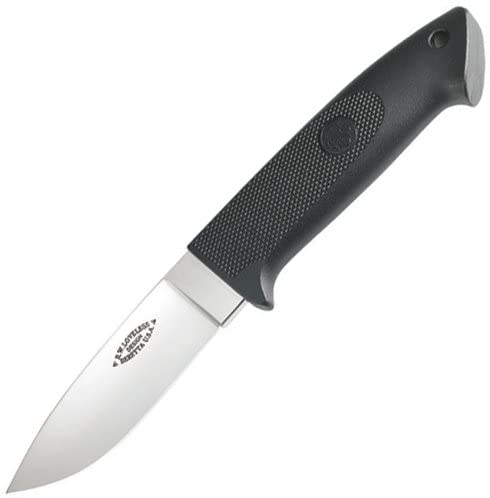
The drop point is known for its sturdiness. The spine of the knife is brought down to reach the point in a slow and gradual manner. This point offers excellent control of the blade, which is great when working in close quarters.
Clip Point
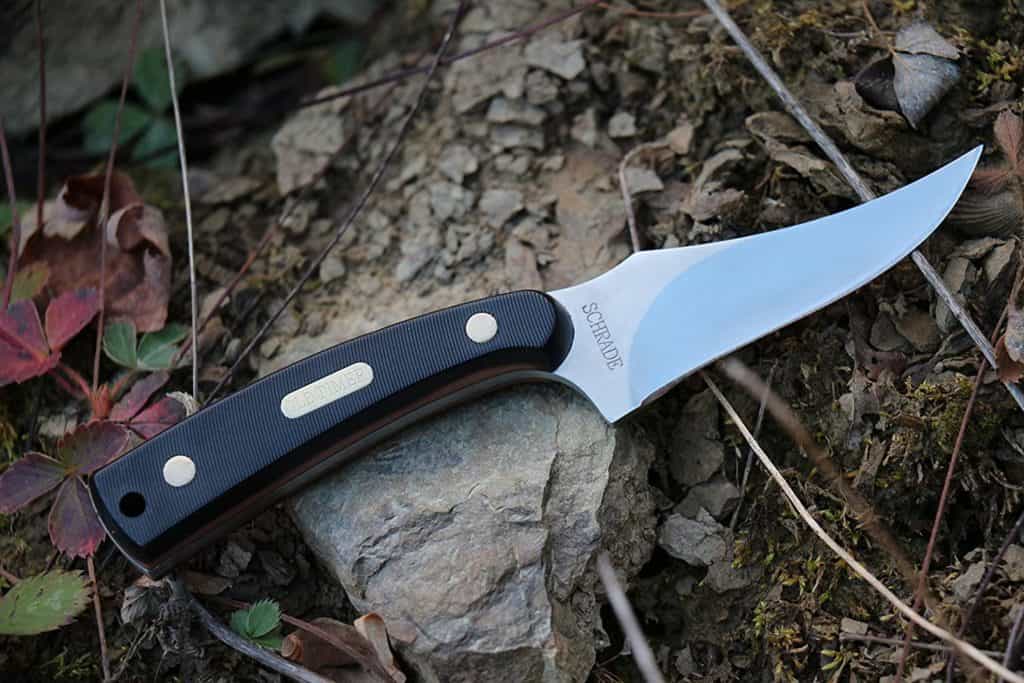
The clip point is a traditional hunting knife design. This blade is the workhorse of the hunting knife world. It is a great do-all blade, capable of handling anything the average hunting trip might throw at it. The clip point features a strong spine, with a sloped edge that leaves a piercing point.
Gut Hook

Another feature that can be lumped in with the tip is a gut hook. These hooks are designed to make processing game much easier, especially when opening up the gut area.
This prevents over-penetration of the stomach and almost eliminates the chance of cutting into something that may spoil or ruin some of the meat.
They’re not for everyone, but the folks that like them really like them (myself included).
Blade Length
Another hotly debated topic regarding the hunting knife blade is the length of the blade itself. The answers to this question will usually range from 2.5” to 5.5”. My personal preference is a 4” blade.
This is perfect for the size of the game I most commonly hunt: whitetail deer. Small game hunters may wish to carry a smaller blade, as they are dealing with much smaller critters, and they are probably putting on more miles each day as well.
Blade Thickness
Blade thickness also comes into play with hunting knives. A recent trend has been using hunting knives that utilize 60A scalpel blades. These blades come out of the packaging razor-sharp and are the very same blades that surgeons use in the operating room.
These blades can make quick work of tasks such as skinning an animal; however, they fall short in other areas. The blades are very thin and use a very steep bevel. This causes the blades to bend easily and lose their edge rather quickly.
I prefer a regular hunting knife blade with a thickness at the spine of around 3/16”. This thickness gives me the rigidity needed to perform tasks such as quartering an animal or cutting some firewood for the evening.
If I need to sharpen the blade halfway through a task, all that is needed is a few passes across my finishing stone to keep the edge razor sharp.
Blade Bevel
The blade bevel is another key part of the hunting knife. There are technically two bevels on a hunting knife, the primary bevel, and the secondary bevel.
The primary bevel will usually start around the mid part of the blade, and slope down to the knife edge. The secondary bevel is another angle right on the knife edge. The secondary bevel is what most people refer to as the bevel of the knife.
Blade bevel typically comes down to preference. Typically, the steeper (or lower inclusive angle) bevel, the sharper the blade. This sharpness comes with great cost, however, as the blade will now have greater difficulty holding an edge.
A hunting knife should have an inclusive bevel of 30 to 60 degrees. This offers a good compromise of blade strength, blade sharpness, and edge retention.
With this bevel, your hunting knife should have no difficulties with common hunting tasks such as creating kindling or skinning your game.
Guard
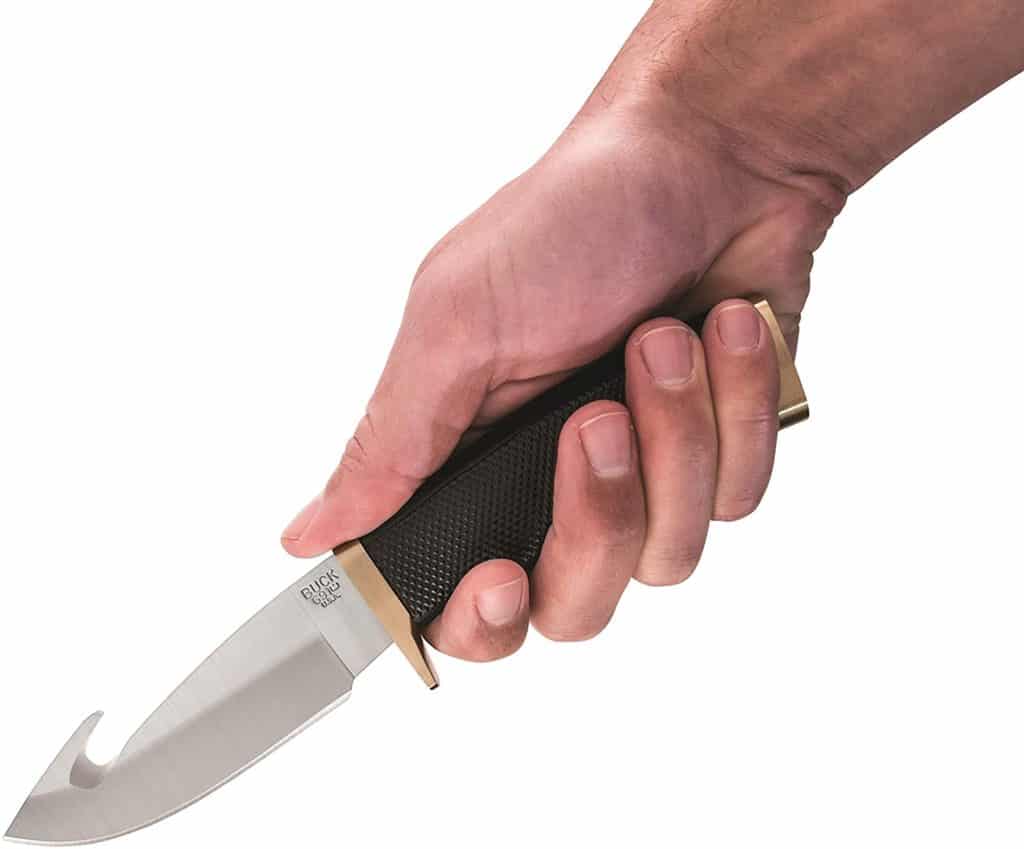
The guard of the knife protects the user from harm. It is located between the blade and the knife handle, and it ensures the user’s hand does not slip off the knife handle and injure the user.
I have also noticed that the knife guard can help protect my hands when working in close quarters, such as a game animal’s abdominal cavity.
However, not all of my hunting knives utilize a guard. They are nice to have but definitely not mandatory. Guards are usually composed of brass, which offers excellent chemical compatibility with stainless steel.
Scales
Knife scales are just as important as the blade itself, contrary to popular belief. Hunting knife scales are composed of two pieces of material that are affixed to the knife tang. With the knife tang, the two knife scales make up the knife handle.
To the untrained eye, knife handles are simply the end of the knife one wraps their hand around to use the blade. The handle of the knife is much more than that. Knife handles and scales come in all different types of designs and all different types of materials.
Handle
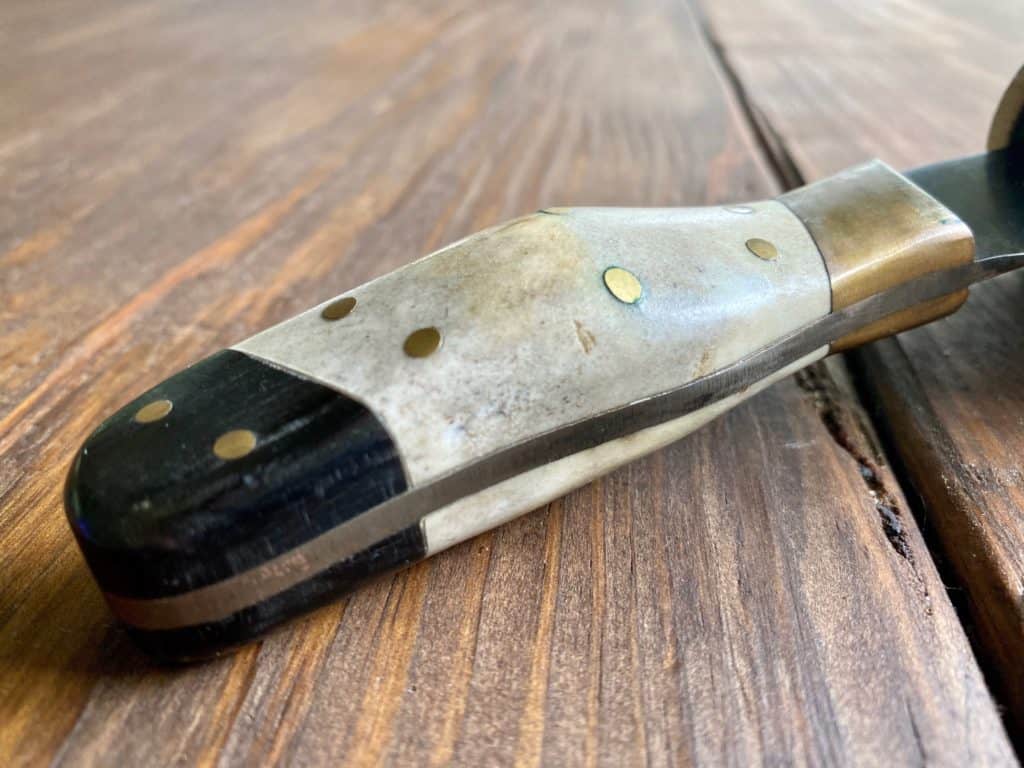
A hunting knife handle should have a slightly concave edge to fit the natural swell in your palm. It should also be composed of a material that is best suited to your type of hunting.
If you desire a rugged backcountry knife, it might be best to investigate synthetic materials for your hunting knife scales. Synthetic knife scales offer supreme durability and are often quite slip-resistant.
Wood and antler handled knives are the king of the hunting knife world when it comes to aesthetics, but they lack the durability of synthetic knife scales.
Tang
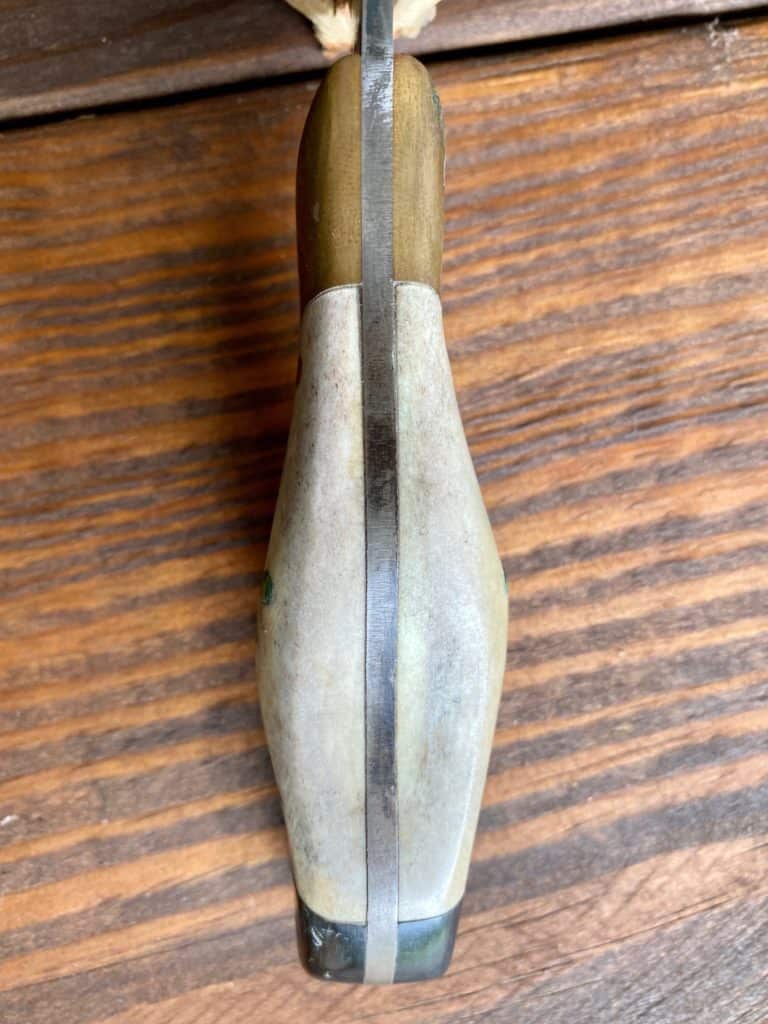
A hunting knife tang is the same piece of material as the blade. The knife tang is the piece of metal that is inserted between the knife scales. This effectively secures the blade to the handle.
A tang will not usually be the full width of the blade portion of the knife, and it will typically have two or three holes drilled into it to accept the pins from the knife scales.
Knife tangs are offered in two main varieties: a full and a partial tang. The full tang is described as having a length that extends almost to the end of the knife.
A hunting knife should almost always utilize a full tang, as full-tang knives are easier to control and can offer more leverage. With more of the material connected to the knife scales, they are less prone to blade deflection.
Knife tangs are also offered in a partial variety. Partial knife tangs utilize a short piece of material that connects to the knife scales. The largest advantage with partial knife tangs is the reduced weight.
When gearing up for a backcountry hunt, shaving ounces can drastically change the outcome of the hunt, and your knees will thank you later. Partial knife tangs match well with this type of hunting.
Conclusion
There are very few things that I feel like I could not leave for a hunting trip without. A good, quality hunting knife is at the top of that list. At a high-level glance, a hunting knife is no more than a simple tool with a blade and a handle.
I like to dive deep into the inner-workings and designs of my hunting gear, and my knife is no exception. Every aspect of the hunting knife has been designed to fit certain scenarios and uses.
Hopefully, the article above will help to guide you in the right direction for choosing the proper hunting knife for your next adventure.

